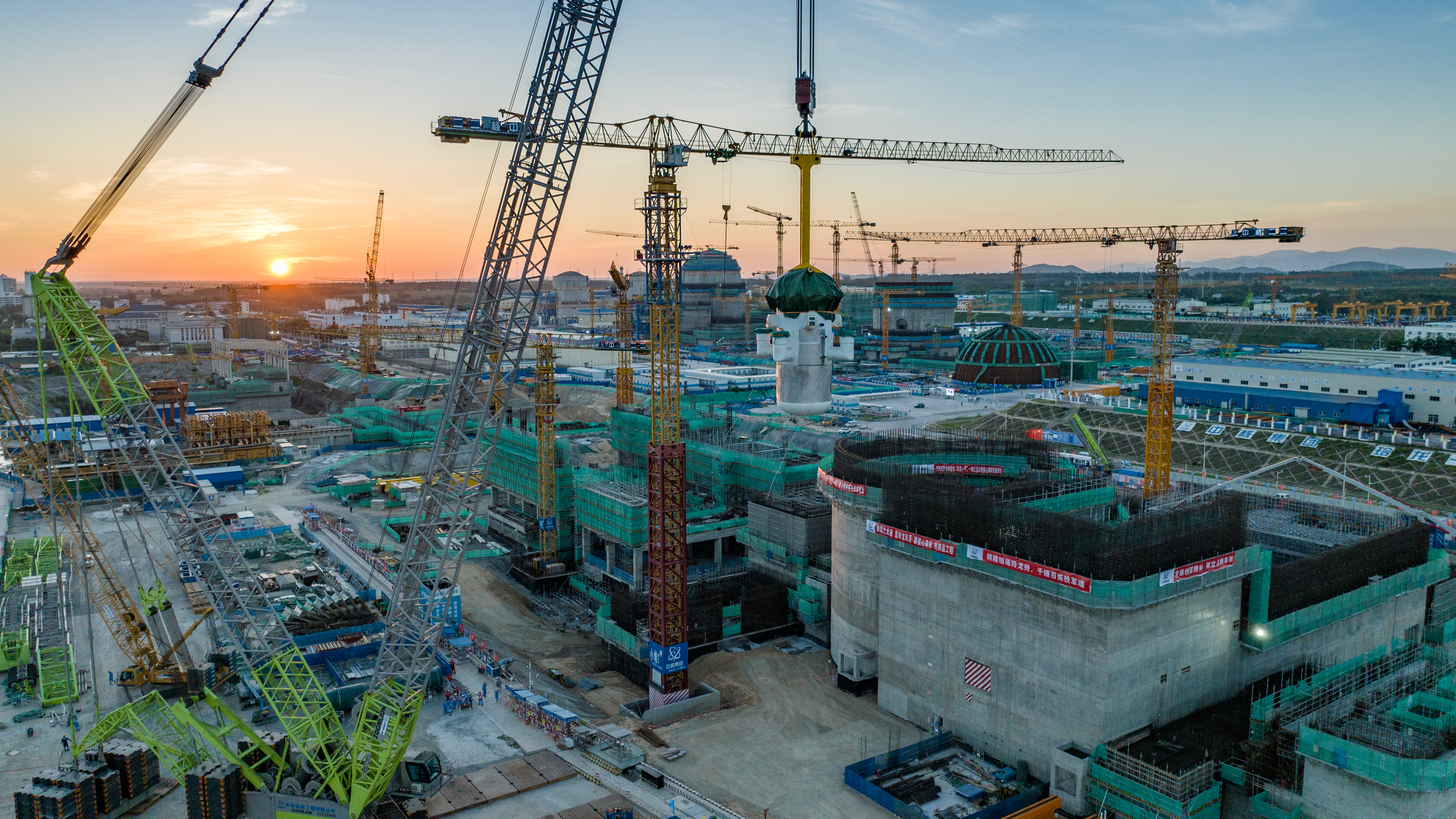
An SMR is a nuclear reactor with a power capacity of up to 300 MWe, which is about one-third of the generating capacity of traditional nuclear power reactors.
It's smaller, cheaper and can be deployed more flexibly. It also features environmental friendliness and high safety. In light of global climate change, the technology has become one of the key directions for a new round of nuclear energy technology transformation and industrial development.
It boasts wide application, such as power generation, seawater desalination, heating and hydrogen production.
As a frontier area, the SMRs are still in their infancy. There are over 80 SMRs in R&D or design stage globally. Linglong-1 (ACP-100) is among one of the four SMRs in the stage of construction or operation. The construction of Linglong-1 began in July 2021 and is scheduled to be completed by 2026.
"This was the first SMR design that was reviewed by the IAEA," said Khammar Mrabit, former director general of Moroccan Agency for Nuclear and Radiological Safety and Security with almost three decades of expertise. "This is very good because it shows the maturity of nuclear power in China."
"For us in Morocco, nuclear power is part of our energy mix."
Some experts recognized the advantages of the SMRs which can play its strength in areas which may not be suitable for large-scale grid.
"The SMR is very compact," said Shelty Juliavionnni, a technical analyst at the Ministry of Energy and Mineral Resources of Indonesia. "I think that the SMR is quite compatible for Indonesia's situation because it can be deployed in a rural area, and it also can be used for specific purposes." Indonesia is an archipelago of over 17,000 islands where large-scale grid may pose exponential challenges and sky-rocketing cost.
"What impressed me most about the site is how the larger and small reactors are arranged," said Elvis Njenga Kimani, principal engineer of Nuclear Power and Energy Agency in Kenya.
"We are looking at all options out there," Kimani said, "Currently we see that the small reactors are actually more beneficial for us because of our current demand within the country."
Song Danrong, chief designer of Linglong-1, said SMRs can perfectly meet demand from nations with smaller populations and fewer industries, such as some African countries, Middle Eastern countries and ASEAN member states.
"They don't need reactors with large capacities but rather hope to begin with smaller ones to fit with local small-sized grid. So Linglong-1 SMR we developed, with a design capacity of about 100 MWe, is spot on for such scenario."